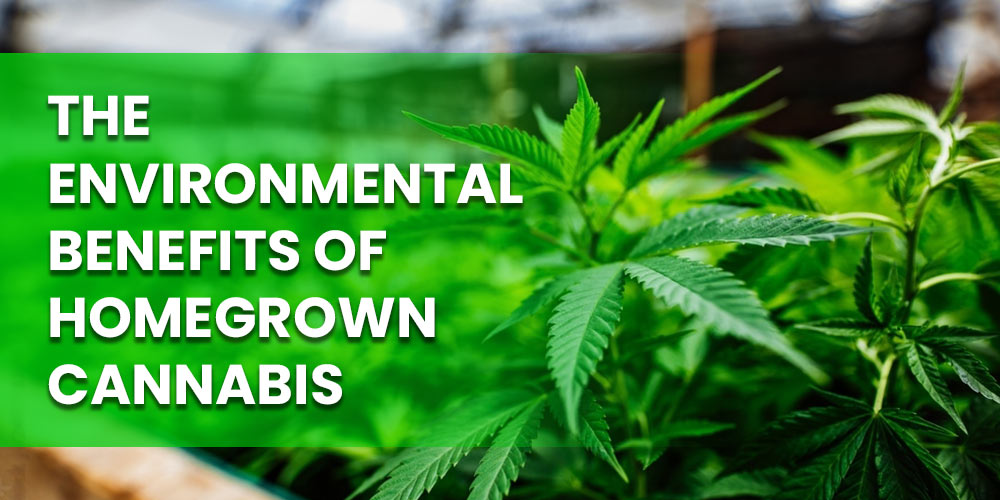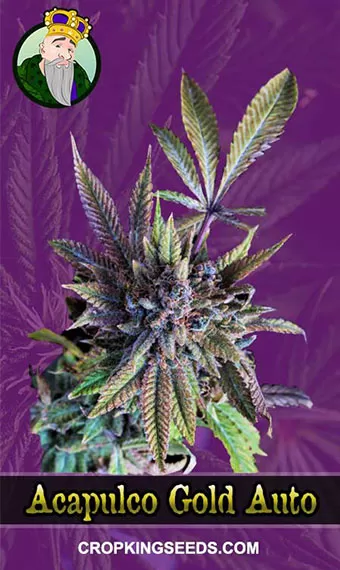Have you ever thought about growing cannabis at home? If yes, then what type of growing method will you use? Is your cannabis going to be cultivated indoors or outdoors? Are you aware of the possible benefits and implications of growing your own marijuana for our environment? I know this might seem too much to handle at once but don’t worry, we got you!
Taking care of our environment is everyone’s responsibility. Not only should we use it for our own interests, but we should also protect and take good care of it. Through proper research and planning, we can assure that our acts won’t bring negative effects not only to both human and animal life but also to our environment itself, which we consider the ultimate provider of almost everything. With proper planning, cultivators are able to responsibly manage their growing area and at the same time produce a top-quality product all the while protecting our environment.
Is cannabis cultivation helping or destroying our planet?
| How Cannabis May Be Destructive | How Cannabis May Be Restorative |
| Electricity is used extensively when growing cannabis indoors or when using lights and irrigation systems. It makes sense that cannabis farming contributes to carbon emissions because electricity is primarily produced using fossil fuels. | Cannabis is a carbon sink, which means that it can absorb carbon dioxide per hectare more than any forest or commercial crop. In simpler words, cannabis it able to take in more carbon than it puts out. This, however, does not take into account the carbon emissions from the use of non-renewable energy sources and water use. |
| Large-scale outdoor/greenhouse growing operations may indicate the need for an organized land-clearing program, which would entail removing any existing plant life in order to reduce carbon emissions. However, this is a problem in all agriculture, not just cannabis farming. | Cannabis plants speed up the sequestration of carbon in the soil that would otherwise have released more of it by acting as a carbon sink. As a result, it may also promote biodiversity in the soil of degraded land. |
| Local animals and insects are being wiped out by the use of toxic pesticides and chemicals in farming. Again, this is not unique to the cultivation of cannabis. | Cannabis can be grown on existing farmland, unlike other plants, even if the soil is compacted. Although it is not required, many people prefer to prepare the land for cannabis. After all, cannabis plants are very hardy. |
| Compared to other plants, cannabis plants frequently need a lot more water. This indicates that, at a time when water is already a scarce resource, substantial consumption is taking place. | The only plant that can currently replace the solar-protective stratospheric aerosols with an adequate amount of atmosphere aerosol monoterpenes is cannabis. Aside from producing sustainable biofuels, the plants also produce complete nutrition. |
| Research on the environmental effects of cannabis farming is becoming more and more prevalent. The majority of this research concludes that the current cannabis farming operations are destructive, but this is also true of other large-scale farming operations. | Cannabis can be used effectively as an agronomic tool to lessen wind and water erosion. |
6 Amazing Environmental Benefits of Sungrown Cannabis
1) Sungrown cannabis doesn’t require high-energy lighting
Growing cannabis indoors is a cause of huge energy consumption as it requires artificial light from light bulbs, unlike growing cannabis in natural sunlight, where you will definitely save energy consumption. It’s just that when you cultivate your cannabis outdoors, you can’t control the sunlight when lighting your crops, unlike when you grow them indoors, where you can adjust the brightness of the light.
2) Sungrown cannabis grows without air regulation
Having enough airflow for the plant is an effective way to have high-grade cannabis. It was proven that growing cannabis plants in areas where there is good airflow has a good effect on the growth of the plant in that it strengthens the stems of the plant, avoids the presence of molds and other diseases, provides strong support for plant growth, and fights against insects that damage the plants. Growing cannabis outdoors provides sufficient airflow to the plant, unlike growing cannabis indoors, where you need to install artificial ventilation to get air inside. We cannot deny that it is too costly to grow cannabis indoors because you always rely on energy.
3) Sungrown marijuana is less prone to mildew and mold.
Some of the factors considered by manufacturers of medicinal plants such as cannabis are how many pesticides or other contaminants are used by cultivators to grow the cannabis plant. The excessive use of pesticides in plants can cause adverse effects or infection to the health of the patient or users. Planting cannabis plants in suitable places where they can adapt to the environment will grow naturally and healthy and does not require any mixing of contaminants to prevent insect and other possible plant diseases because the temperature outside is fluctuating, which is why they are not inhabited by any insects. Unlike cannabis grown indoors, the plant becomes stunted because it doesn’t get natural resistance from its environment. That’s why other farmers always rely on organic fertilizers and pesticides to grow cannabis plants properly.
4) Sungrown cannabis can preserve natural soils
The natural environment can be preserved by using organic farming practices. Farmers using this method of cultivating cannabis are able to be more environmentally friendly due to the fact that cannabis is grown using natural sunlight. Organic farming techniques can also be used indoors, however, they are limited, unlike growing outdoors, as you can only freely draw on the soil’s natural nutrients.
Cannabis can be grown outdoors while maintaining rich and healthy soil nutrients. Outdoor farming can be combined with permaculture practices such as companion planting and soil cultivation. Farmers who follow sustainable outdoor farming methods can preserve the soil’s natural nutrient properties to slow global warming.
5) Sungrown cannabis supports the plant’s natural life cycle
We all know that every plant needs sunlight to carry out the process we call photosynthesis, which acts to grow the plant, but it turns out that it is more complicated than cannabis plants grown indoors. Excessive exposure of the plant to the sun can be compared to the presence of high concentrations of the cannabinoid terpene in cannabis. Although this complication has not been fully proven because we know that artificial light cannot be generated like natural sunlight, it is clear to us that the benefits you can get from cannabis plants grown outside are still better because cannabis growth develops from the resistance they get in the natural environment.
6) Organic and sustainable farming practices are key
To get the full environmental benefits of outdoor growing, sustainable farming practices must be used. Growing outdoors does not require as much energy as growing indoors, but this does not mean that it is a more environmentally friendly option. Farmers used to choose this method of cultivating cannabis to minimize the cost of money as well as the possible negative effects of using chemicals in the plant on humans health. It is really important to remember that since the term “organic” is federally regulated, cannabis cannot lawfully be referred to as such in the United States. However, it is still possible to use organic farming methods.
Other Environmental Benefits Of Cannabis
Like any other plant, cannabis plays an important role in maintaining a balanced ecosystem.
Growing cannabis plants not only provides good conditions for human health but also for our environment.
Some examples of the environmental benefits that can be obtained from cultivating cannabis are as follows:
- Cannabis Reduces Carbon Dioxide In The Atmosphere
Global warming is primarily caused by carbon dioxide. Hemp has been found to absorb more carbon dioxide than any other crop. That means it takes more carbon dioxide from our atmosphere and stores it in the soil through a process called carbon sequestration.
Hemp is regarded as one of the most effective converters of carbon dioxide in the world because of its quick growth and ability to survive in the least favorable environment for a plant.
Many are suggesting planting more of it to save our world from global warming; however, it is said that the cannabis plant is still more effective than hemp.
- Cannabis Is A Natural Soil Cleaner
Soil contamination is one of the major issues in our environment nowadays. The excessive use of harmful chemicals or other contaminants in many industrial establishments may cause the soil to become toxic, which is why it is no longer safe to grow food, vegetables, and other crops in the area. Contaminated soil destroys soil nutrients, which can cause poor plant growth results. The pollution that comes from the factory is absorbed underground, which is the reason for its contamination. The research found that hemp, a variety of the cannabis sativa plant, is effective in absorbing contaminants and making the soil pure. This process is called phytoremediation.
- Cannabis Is A Renewable Biofuel
Coming up with a solution to the problem of ever-increasing fuel prices is still a big challenge in our time, and it is likely to increase in the next generation. The search for alternative ways to produce renewable fuels that reduce reliance on fossil fuels is still ongoing, but one time a researcher from a university discovered that hemp oil has the ability to be made into biodiesel. They found that hemp biodiesel showed a high conversion efficiency of 97%. It is better than other alternative oils, most effective, and environmentally friendly.
- Cannabis Is A Sustainable Choice For Paper And Fabric
Hemp, or Cannabis sativa, is a very sustainable resource that may be used to make clothes and paper.
Paper made from hemp might help stop the destruction of forests. Compared to wood pulp paper, which can only be recycled three times, hemp paper can be recycled up to eight times. Compared to paper made from wood, it also requires a lot less water and chemicals.
Fabric made of hemp is 100% biodegradable. Cannabis sativa (hemp) is one of the strongest and most resilient organic fibers on the earth; it is reported to have three times the tensile strength of cotton. It is pleasant and becomes softer with each wash. Hemp generates 220% more fiber while using less than a third of the water that cotton does.
Conclusion
Generally speaking, the environmental benefits of cannabis cultivation help to balance our ecosystem. It does not only aid in reducing global warming but also helps in solving challenges pertaining to soil contaminants, and other problems that can affect the lives of living things on this planet.
To ignite your cultivating journey one thing to do to start is to buy seeds of great quality. By purchasing at our store Crop King Seeds you are not only helping the environment but also giving yourself the chance to produce a top marijuana plant strain that could make your cultivating journey even more fun and rewarding! With free shipping on orders 200$ and above, it’s never been easier to get your hands on high-quality marijuana seeds.


















